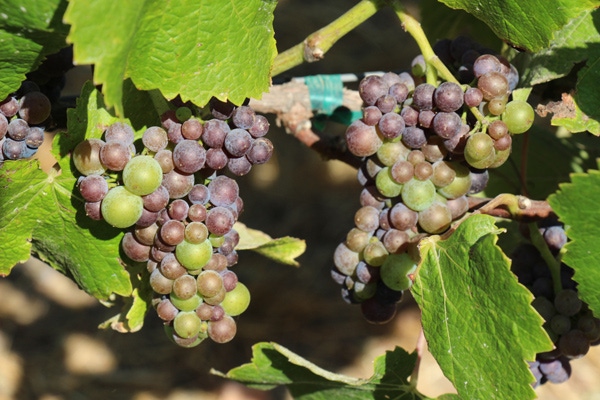
With California’s wine grape vineyards on a fast track to producing what looks to be the third large crop in as many years, finding a home for uncommitted 2014 grapes could prove somewhat daunting, especially for Central Valley sellers, reports grape broker and partner Glenn Proctor, Ciatti Company, San Rafael, Calif.
However, as he points out, much of this year’s crop is being grown on contract. Any available 2014 grapes represent only a small portion of total production.
“A lot of fruit is under long-term contracts at good prices,” Proctor says. “Returns from those grapes should be solid this year. But, moving grapes into the open market at this point might be a challenge.”
Except for areas of the southern and West Side of the San Joaquin Valley, where deliveries of surface water have been curtailed, and parts of the Paso Robles region, growers should have enough water to meet the needs of their vineyards this year, Proctor notes.
The quality of the grapes appears to be good, too. Not counting a few spots of powdery mildew in the Central and North Coast areas, this year’s wine grape crop has been mostly clean of any disease problems, particularly in the Central Valley.
These factors, plus favorable weather, have produced what looks like average yields in some areas and average to better in others, Proctor notes. Consequently, many observers are projecting the 2014 wine grape harvest to total around 4 million tons. That compares to the record highs of the last two years when production exceeded that level.
“We don’t necessarily need a third big crop in a row,” Proctor says. “We’ll likely be long on supply relative to demand. But, as long as sales keep growing, we’ll be able to work our way out of it.”
Meanwhile, following a strong start of the year with good buying activity and stable prices in coastal areas, the market there has slowed in the last two months as buyers began assessing this year’s potential crop size and bulk wine inventories. As a result, spot prices for varieties expected to produce normal yields this year, including Chardonnay, Merlot and Sauvignon Blanc, have softened, Proctor says.
The variety bringing the best spot prices is probably North Coast Cabernet Sauvignon. “The appetite for it from buyers has been extremely strong in Lake, Mendocino, Sonoma and Napa Counties,” he says. “Those grapes are hard to find. This is probably the tightest part of the whole market right now.”
In the Central Valley, slipping casegood sales, have caused spot grape buyers to back away from varieties used to produce wines selling for $7 to $10 a bottle or less. Those varieties represent much of the region’s wine grape production.
“In general, this market has been slow throughout the year,” Proctor says.
He tells of one large Central Valley grower who describes this year’s market for uncommitted grapes as the slowest since 2004 and 2005. Several other growers report offering package deals, enticing buyers to purchase certain slow-moving varieties, such as Chardonnay, along with a more-desired one, like Pinot Noir, Proctor says.
“We’re seeing activity in certain varieties, like Pinot Grigio and Sauvignon Blanc, and, particularly, Rubired. Pinot Noir has continued relatively strong. However, it looks like Chardonnay and Zinfandel are among the Valley varieties that are long on supply relative to demand. Some will be sold. But, we’re not sure at what price. Right now buyers and sellers seem to be at the point of who blinks first.”
Another factor that could affect the spot market for 2014 grapes is the ability of wineries to handle any excess fruit, Proctor adds.
“The tank and crush capacity is pretty tight out there,” he says. “A large crop this year will tax the system a bit. If the harvest comes in too much and too fast, coastal wineries will be challenged to keep up.”
Not surprisingly, the last two large wine grape crops have led to a slowdown in the bulk wine market, too. In fact, Proctor reports the amount of bulk wine for sale has reached levels not seen in the past five or six years.
“There aren’t a lot of buyers in the bulk market, especially in the Central Valley,” he says. “There’s some activity on the Coast around Cabernet Sauvignon, Pinot Noir and the more prestigious appellations of Chardonnay.”
The international market isn’t likely to provide much of an outlet for bulk wine from California, at least for now. Citing such examples as good volumes of wine this year in Spain and Chile and a relatively good size crush in Argentina, Proctor says the international supply of wine is relatively flush.
Meanwhile, until California’s 2014 harvest gets into full swing – probably sometime around the end of August or early September – caution prevails in the market. “Buyers and sellers are trying to make the best decisions based on what they think will happen in the next month or two,” he says. “Right now, there are a lot of unknowns, especially – How many grapes will we have when it’s all said and done?”
About the Author(s)
You May Also Like




